A strange amphibious 4x4/8x8
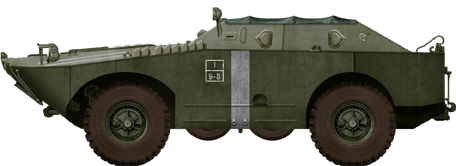
The previous BTR-40 light APC was used as a reconnaissance vehicle in the 1950s, but was severely limited in its mobility by its lack of amphibious capabilities, something that did not exist with prior Soviet wheeled vehicles but was made imperative in the new planned tactics based on speed. Eventually, Soviet engineers as often came with an out-of-the box solution. More than converting a BTR-40 to be amphibious, they built a boat-shaped hull with a convertible wheeltrain, 4x4 or 8x8 to increase mobility of the worst soft grounds like swamps, sand, deep mud, creating a truly all-terrain vehicle. Built by ten of thousands, it was exported to the Warsaw Pact countries, built under licence, and fifty countries adopted it worldwide.
Development
Late 1954 work began at the A. Dedkov OKB design bureau, under the direction of designer V. K. Rubtsov. The first drawings were an amphibious variant of the BTR-40 designated BTR-40P, but as the design progressed it changed to a true amphibious armored scout car, or "Boyevaya Razvedyvatelnaya Dozornaya Mashina" which gave BRDM. This designation was changed to BRDM-1 when a brand new model came out in 1962. The BRDM first prototype came out in February 1956, was heavily tested on the black sea, and approved for service in 1957. Production started the same year and ended in 1966 after 10,000 vehicles had been cranked-up with gradual upgrades.Design
Protection
The hull was made in welded steel RHA, made completely waterproof and has a distinctive boat-shape, especially at the front. The hull was only 10 mm at the thickest (at the front), however, the nose had the extra protection of the trim vane, stored in neutral position. The engine was mounted at the front, and crew compartment relegated to the rear, which gave this "long nose", ducky appearance. In the driving compartment, the driver sat on the left, and commander at the right, both with their own armored shutters with integral vision blocks instead of simple slits. There was no IR device but the driver was assisted by driving lights, and a single white light searchlight. At first, the BRDM obr.1957 was given an open roof, but rapidly on the obr.1958, it was enclosed, with hatches above the driver and commander seats while two more were added at the rear slope when the roof joined the hull. The rest of the crew took place behind. he commander operated the main armament, generally placed in a centrally-mounted pintle mount between at the front. They were pistol ports in the superstructure sides (four), and one in each rear hatch. However, the vehicle was not NBC protected.Mobility
The Major Innovation of the design came from its unique convertible 4x4/8x8 configuration. The normal stand was 4x4, with fixed axles, but two axles took place in between, belly wheels which can be lowered to improve cross-country performance and ease ground pressure. On road, they were always in raised position. The BRDM was propelled by a GAZ-40PB V8 in-line gasoline giving 90 hp (70 kW) at 3,400 rpm, for a power to weight of 16 hp/tonne (12.4 kW/tonne). This engine was derived from a ww2 US-built Dodge truck engine and was connected to a manual gearbox, single dry-plate clutch, with four forward gears and one reverse. This vehicle was really optimized to be amphibious, being given a front trim vane which, when erected deflected waves, and a rear water jet on the hull's back panel. The jet is produced by an internal four-bladed propeller driven by the engine. its outlet is protected armored shutter while traveling on land.Armament
Normal, standard armament was the pintle-mounted central 7.62 mm SGMB medium machine gun which only appeared with the Obr.1959. Both previous models (1957, and 1958) were completely unarmed. Tow optional 7.62 mm SGMB medium machine guns could be mounted on the side pintle mounts from the Obr.1960. and even three on the late models. From the Obr.1961, the central SGMB was replaced by a heavy 12.7 mm DShK 1938/46 and even later, or optionally by the new 14.5 mm KPV heavy machine gun. So some models were armed with up to four MGs, a central KPV, rear pintle-mounted SGMB and two others on the sides, plus the pistol ports weapons.Variants
BRDM-RKh
NBC reconnaissance vehicle: Two KZO-2 flag dispensers, several detection devices (DP dosimeter, PCHR-54 semi-automatic detection), also designated BTR-40P-Rkh.BRDM-1U
Command version: Additional R-112 radios and 3 whip antennas, also designated BTR-40PU. A sub-variant has a rear traffic light.2P27
Tank Destroyer (1958): 2K16 launcher for three 3M6 "Shmel" (AT-1 Snapper) ATGM launchers. The whole compartment was rebuilt and rear seats eliminated to make room for the raising launcher, which could traverse 360°. It is normally hidden inside of the superstructure, making it impossible to distinguish from the standard BRDM.2P32
Tank Destroyer (1962), similar, but upgraded to the 2K8 launcher with four bigger 9M11 "Falanga" (AT-2 Swatter).9P110
Tank Destroyer (1963), armed with the smaller 9M14 "Malyutka" (AT-3 Sagger). Six could be carried on the 9К14М launcher. The launching apparatus was simplified and there was no overhead protection for the operator.Exports
Warsaw Pact
- Albania: 15 (1960) still in service
- Bulgaria: 150 delivered 1965-67, retired in the 1980s
- Czechoslovakia: OT-65 (D-442 FÚG), replaced by the BRDM-2 in the 1970s
- East Germany: 100 delivered 1960-62, designated SPW-40P, along with the modified local SPW-40PA and 9P111 TD
- Hungary: Licence-built the D-442 FÚG also used by Czechoslovakia and Poland
- Poland: 800 delivered 1961-64. now retired
- Yugoslavia: Unknown numbers of BRDM-1 and 9P27
Other operators
Estimated total: Around 2,000 vehicles exported.- Afghanistan: 50 Delivered 1970-71
- Angola: 120
- Belarus: 142
- Benin
- Cape Verde
- Central African republic
- Chad
- Cuba: 50 delivered 1966.
- Democratic Republic of the Congo
- Djibouti
- Egypt: 200 delivered 1968-69
- Equatorial Guinea
- Eritrea
- Ethiopia: 50 delivered 1977.
- Guinea: 10 delivered 1969
- Guinea-Bissau
- Indonesia: 10 delivered 1963.
- Irak: Some 1,300 BRDM-1/2, now scrapped.
- Libya: 60 delivered 1978
- Madagascar
- Malawi
- Mali
- Mauritania
- Mongolia: Only the 9P110 variant
- Morocco
- Mozambique: 20+31 delivered 1977, 1978-80. Still 30 in service.
- Nicaragua
- São Tomé and Príncipe
- Serbia: Operates 30 ex-Yugoslavian vehicles
- Seychelles
- Somalia
- Sudan: 5 delivered 1960
- Syria: 100 delivered 1970-71
- Tanzania: 30 delivered 1965
- Ukraine
- Uganda: 62+63 delivered 1973-74
- Vietnam: The NVA operated 50 vehicles (delivered 1963-66)
- Yemen
- Zambia: 44 delivered 1980
- Zimbabwe: 20
The BRDM-1 in action
It entered service in 1957 and was produced until 1966 when replaced by the BRDM-2. Czechoslovakia only used the BRDM-1 obr. 1958 before swapping to the OT-65, local denomination of the Hungarian D-442 FÚG, and the BRDM-2. Hungary devised soon its own vehicle. Poland was the most prolific user, with more than 800 vehicles, including the 2P27 and 9P110 tank hunters, and BRDM-RKh in recce units before being replaced by their BRDM-2 equivalents in the 1970s. Egyptian and Syrian vehicles saw action in the Yom Kippur war (1973), Iraqi vehicles during the Iran-Iraq war and 1st gulf war. Angolan vehicles participated in the 1980s "Bush war", and many others were found in military actions in minor conflicts and civil wars. An estimated 600 vehicles are still in service worldwide, mostly in Africa, most being second-hand, ex-Soviet vehicles replaced by the BRDM-2. Although its mobility was excellent, poor protection was really a problem, as any heavy machine gun could destroy it with ease. It was also found vulnerable to mines. Its others limitations were exposed gunners, no NBC protection, no default vision equipment nor special sight. It was quite primitive for recce missions, only relying on its mobility. The BRDM-2 solved these problems and was equally successful on the export market.BRDM-1 related links
The BRDM-1 on WikipediaAbout the derivative Hungarian D-442 FÚG
BRDM-1 specifications |
|
| Dimensions (L-w-h) | 5.7 x 2.25 x 2.9 m (18.8 x 7.5 x 9.6 ft.in) |
| Total weight, battle ready | 5.63 Tons (yyy lbs) |
| Crew | 3-4 (Driver, Commander, gunner, radio) |
| Propulsion | GAZ-40PB V8 gas. 90 hp (70 kW) @3,400 rpm, pwr 16hp/t |
| Speed (land/water) | 90 kph/9 kph (yy/yy mph) |
| Range (land/water) | 750 km (470 mi)/120 km (75 mi) |
| Armament | 1-3 x 7.62 mm SGMB, 12.7 mm DShK, 14.5 mm KPVT - see notes. |
| Armor | 10 mm max (0.4 in) |
| Total production | Approx. 10,000 |

BRDM Obr.1957 or BTR-40P. This vehicle had an open roof.
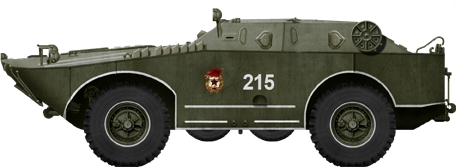
BRDM Obr.1958 in parade livery. Enclosed roof but still unarmed.
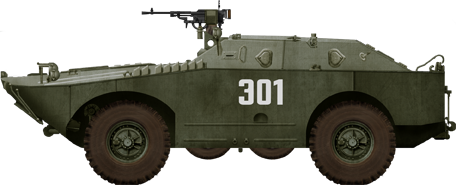
BRDM Obr.1959, the standard production version.
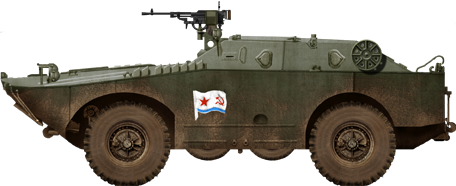
BRDM Obr.1960 of the Marines. Secondary pintle-mounted SMGB medium MGs
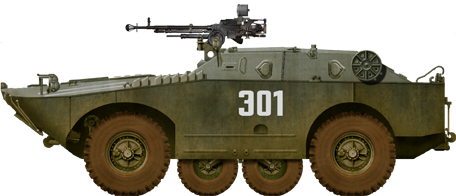
Mid-production in the 1960s, armed with a 12.7 mm DShK
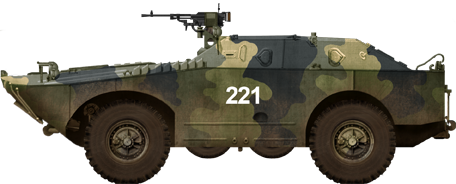
Camouflaged BRDM-1 in the 1970s
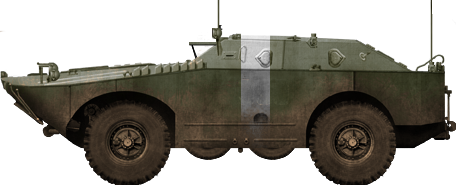
BRDM-1U (Command Car) in the 1970s
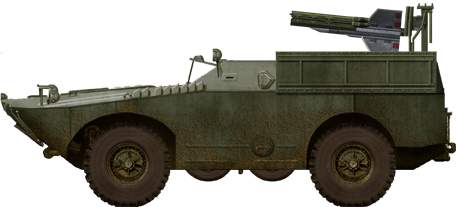
2P27 Tank Destroyer (1958) armed with AT-1 Snapper ATGMs
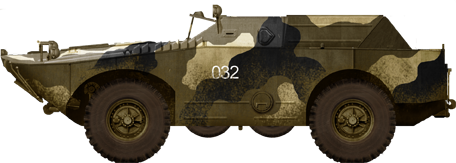
9P110 Tank Destroyer (1963) armed with the Malyutka (AT-3 Sagger)
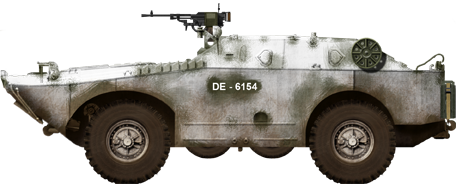
Polish BRDM-1 in winter paint.
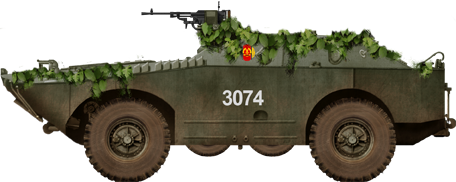
East German SPW-40P.
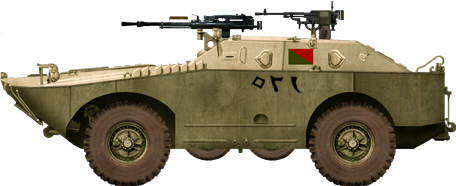
Egyptian BRDM-1, 12th Intantry Brigade, 6th Armoured Regiment, 288th Arm. Batll. 2nd Co. in 1973.
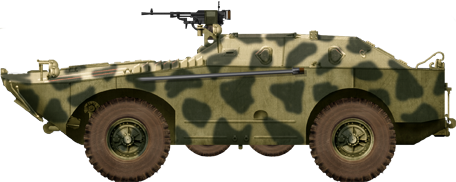
Libyan BRDM-1 in the 1990s.
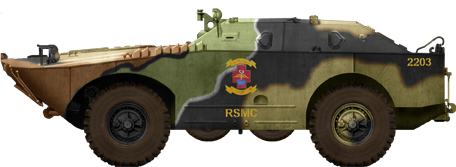
Indonesian Marines BRDM-1.
Gallery
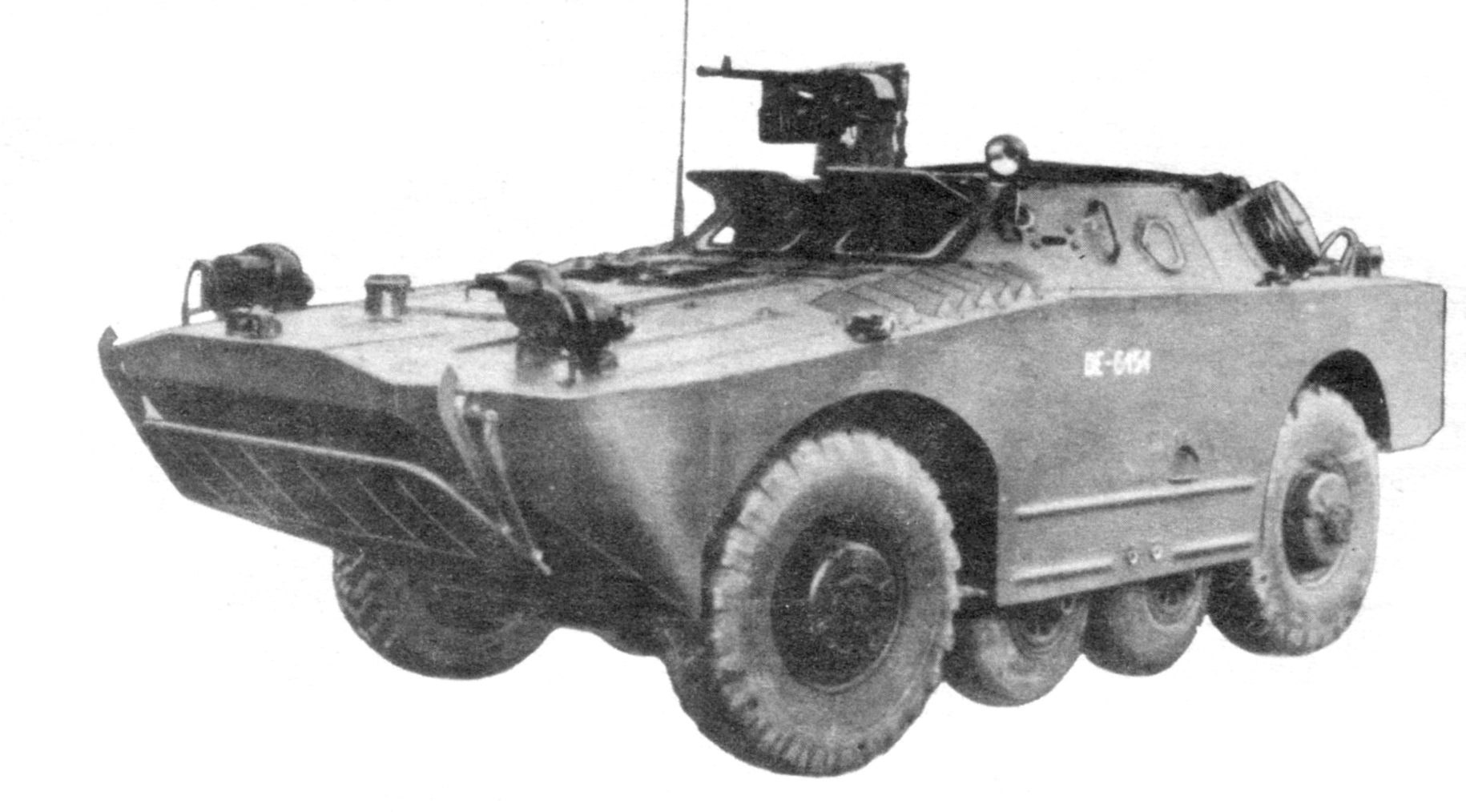
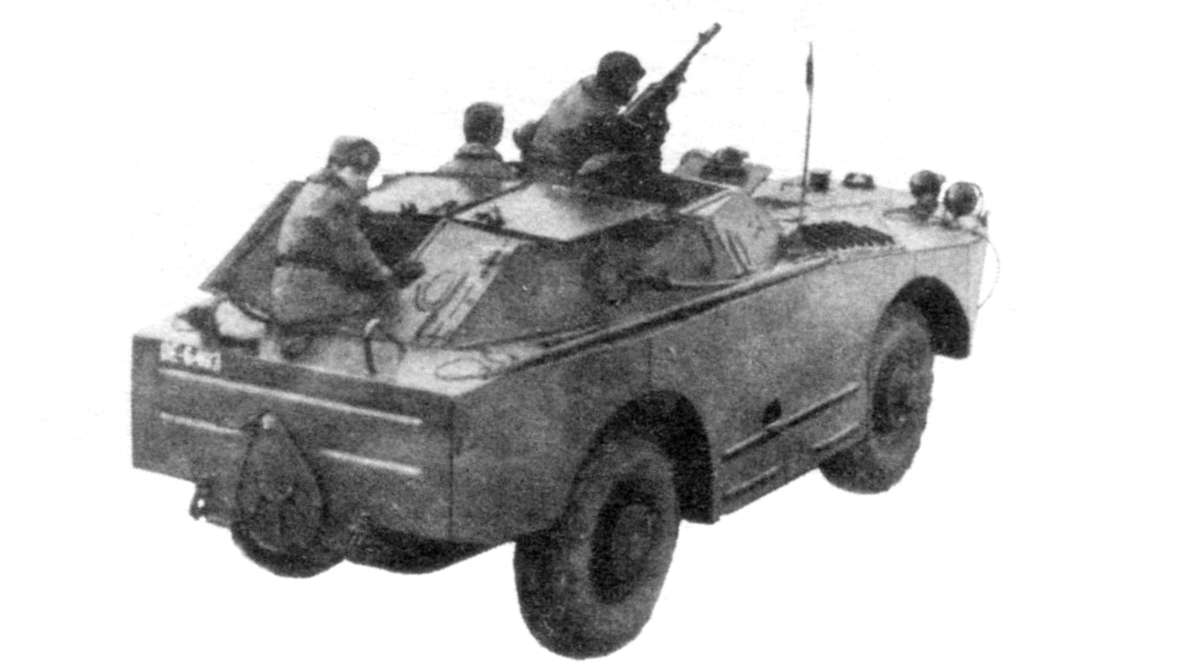
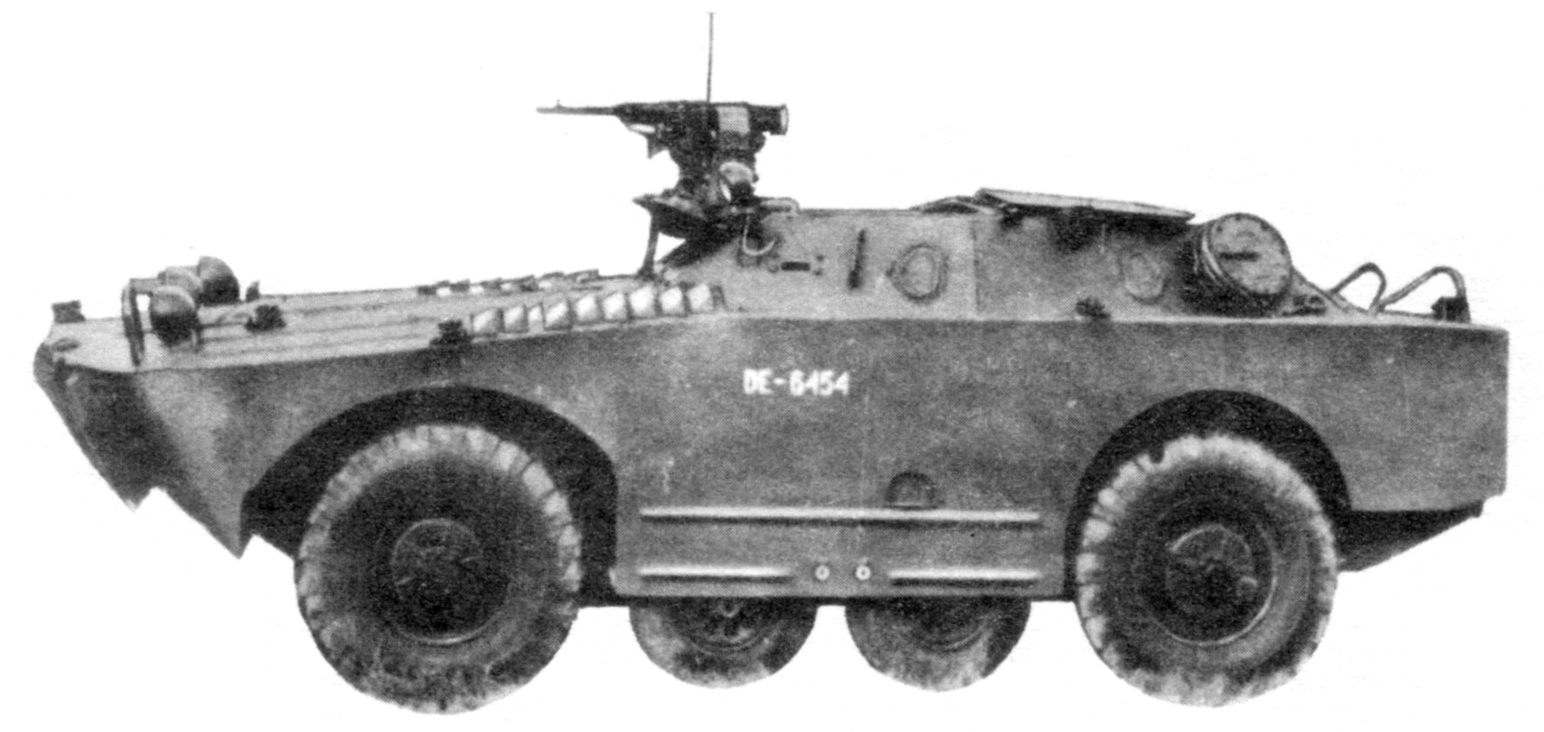
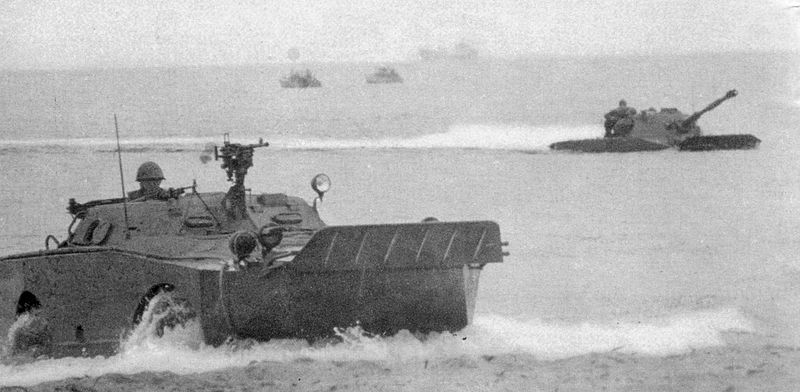
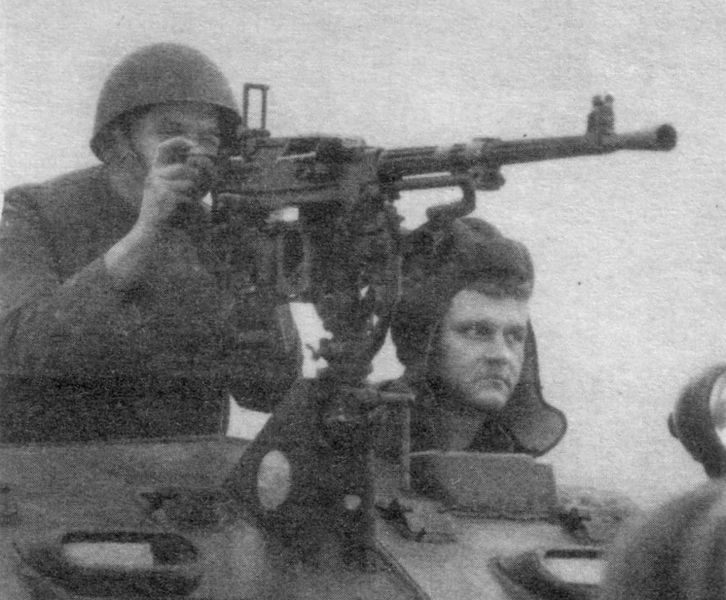
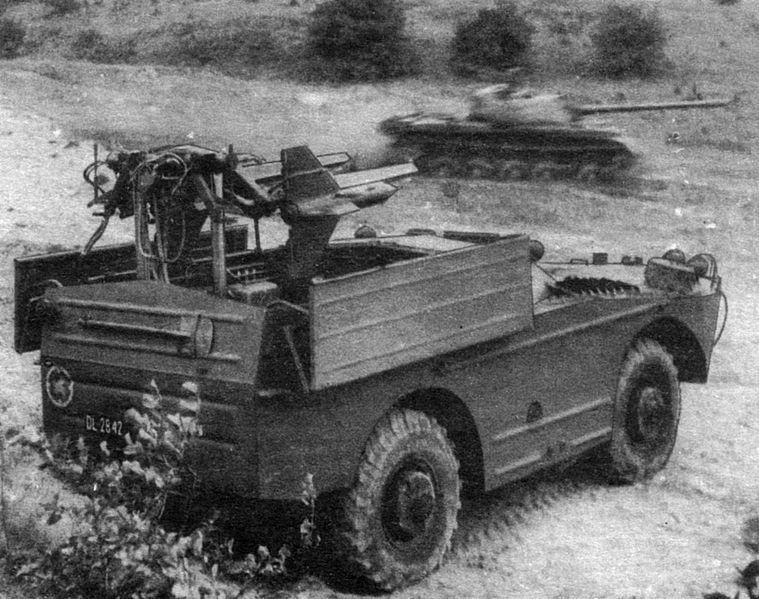
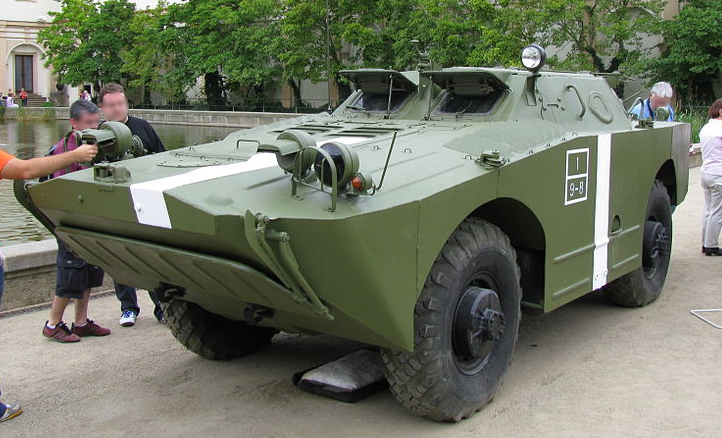
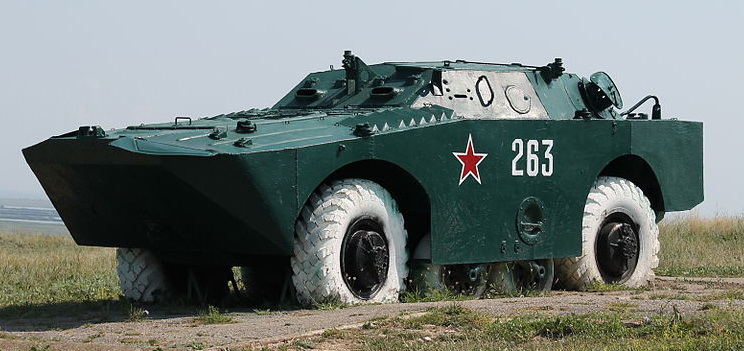
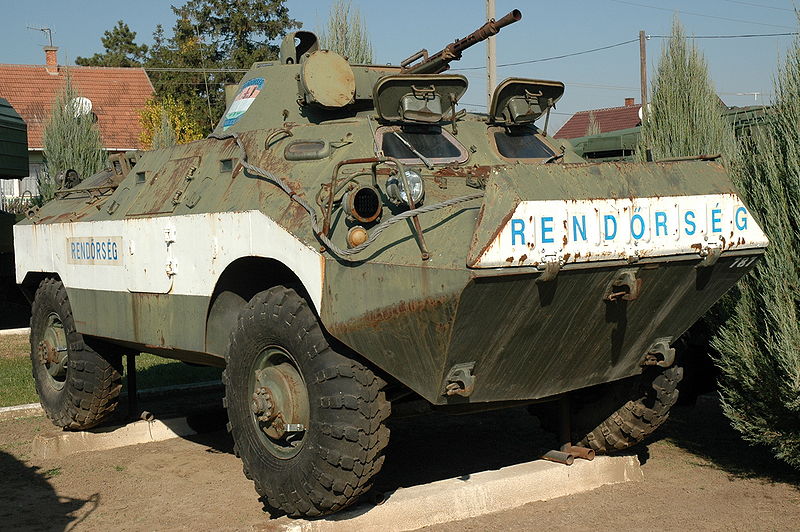

Cold War Tanks


































Cold war tanks posters

Cold War Main Battle Tanks

Cold War Soviet Army

